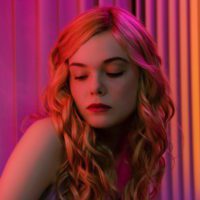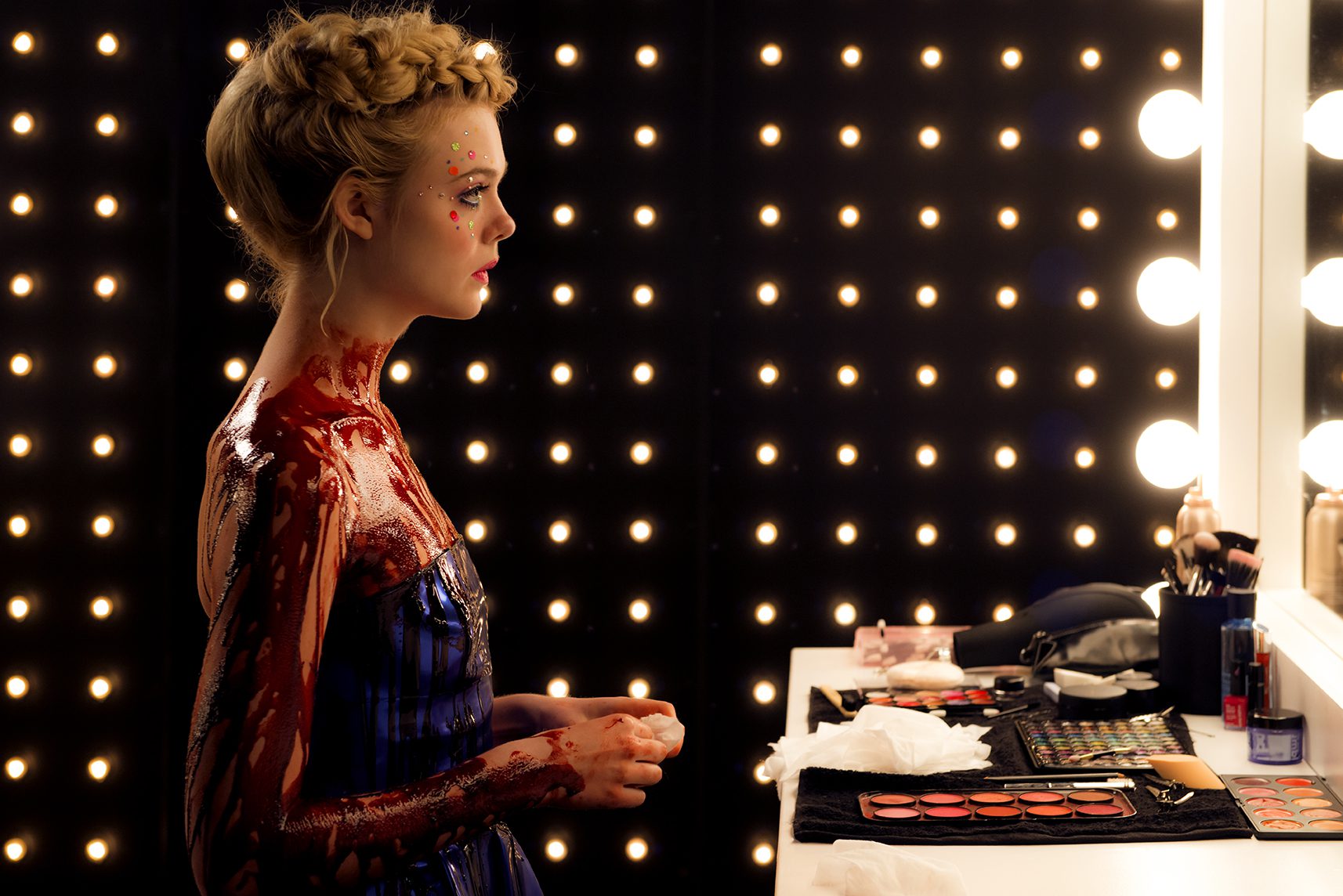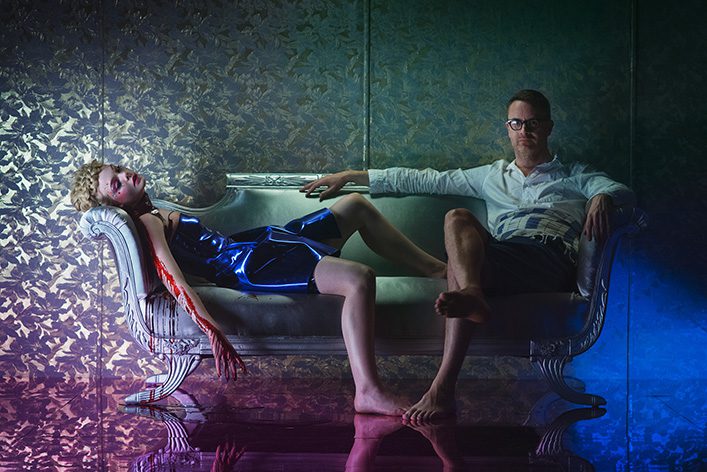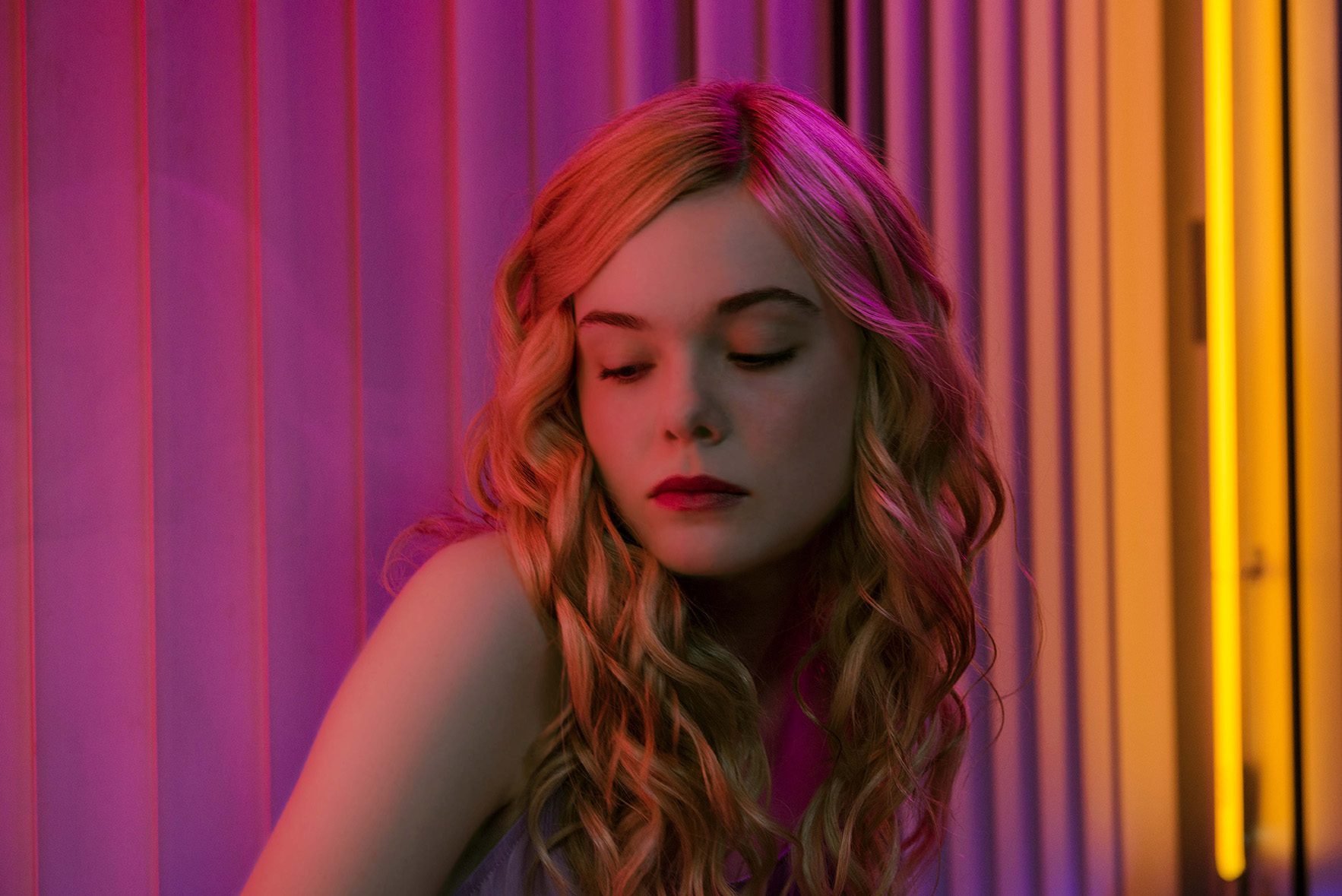When I sat down at the hotel’s round dining room table, Danish director Nicolas Winding Refn asked me for permission to eat his breakfast. This moment of deference was the only one he made during the course of our interview. The previous night I’d gone to the Alamo Drafthouse Cinema for a screening of The Neon Demon, Refn’s latest movie (earlier films include Bronson (2008), Drive (2011), and Only God Forgives (2013)). In the Q&A afterwards, a friendly interlocutor, after lavishly praising the film, maintained a smile through every one of Refn’s curt, dismissive replies. It was like watching Cerberus lick his lips at the approach of an unknowing innocent. There was no doubt in anyone’s mind that the hounds of hell were about to be well fed.
The banquet hall where we sat together the next morning was refulgent with an artificial white light, which reminded me of two scenes that bookend The Neon Demon. Both take place on modeling shoots; both concern the essence of a young model’s soul. Refn’s aesthetic tone in the film brings to mind the covers of Roxy Music albums like the 1974 Country Life; the 1980s imagery of the photographer Jean-Paul Goude; and Dumb Animals, an anti-fur video from 1985 directed by David Bailey.
The high-gloss surfaces in this world contain and combine two disparate species: the savagery of a predatory animal within the perfect beauty of a blonde goddess. Refn has revised the mythology of Aphrodite; she dons as much armor as Athena, enjoying nothing but the hunt. When I asked the director if he could cite any visual influences, his flat affect implied disdain for my simplistic question: “I just photograph what I find interesting. I believe that women are more powerful and more interesting than men. It’s just very much what I like to fantasize about.” Fair enough.
The movie concerns itself with Los Angeles, and the arrival there of an aspiring model (read narcissist) named Jesse, played by a somewhat reluctant Elle Fanning. She, perhaps wisely, doesn’t entirely abandon herself to the role. As Jesse, she is required to recite dialogue that approximates the film’s tagline, “Beauty isn’t everything. It’s the only thing.” And with that caustic aphorism, Refn officially updates the Los Angeles city motto.
This being his second film about LA—the first was Drive with Ryan Gosling—I wanted to know why the director, who lives in Copenhagen, revisited the locale. This question provoked a more thoughtful response: “Drive was about a stuntman caught in the mythology of Hollywood. I’ve always been very interested in that mythology. I made it about the freeways, the movement, the liquidized culture of cars. It was the night version of the LA car culture.”
The Neon Demon, though, became the opposite for Refn. “It was all about interiors. Most of the film takes place in houses, motels, buildings. For me to come to Los Angeles, it’s like walking into this magical landscape. It’s like being Alice in Alice In Wonderland. All I have in my mind is that this is a fantasy world.” To my mind, there isn’t another film that rivals Neon Demon for extracting so much menace from white space and light. As a director, Refn subverts the power of color, contaminating a purist’s version of heaven until it feels threatening. Daylight here burns up the atmosphere. The dawn of a new day is, in fact, the end of everything.
When I suggested that what he presents is a dark fantasy (if brightly lit), he disagreed: “Not necessarily. I think there’s a lot of extreme beauty.”
Among the list of niceties that make up his definition of extreme beauty: necrophilia, cannibalism, murder, rape, ritual sacrifice, vampirism. Of these extremes though, the most recognizable human flaw on display is the rapacious, unsatisfied hunger of emptied souls. The female imagination depicted on screen is limited to one form of aspiration: to be the most desired woman on earth. In the role of Paris, however, Refn withholds the apple. His women are as numb as mannequins, except they’re not immune to aging. Their sole motivation for living comes from the threat of no longer being beautiful. For them, it’s a fate worse than death.
There’s a fundamental problem with portraying models as vapid, dangerous, and morally corrupt. In the first place, Jesse and her cohorts aren’t responsible for the creation of their chosen industry. Jesse is an orphan—it’s unclear if that’s by fate or by design—in need of a profession and a wage. She tells a photographer that beauty is her only saleable asset. Whether this self-assessment is true or not, it feels overly punitive to damn a sixteen-year-old for having an undeveloped character, a dearth of virtue. Her home, a seedy motel managed by a leaden Keanu Reeves, places her on the financial fringes of Los Angeles. But Refn describes the city as “this dream factory, the Hollywood Babylon.” The psychic life of the place mesmerizes her. “That’s what The Neon Demon is about: a mindset.”
The film further omits the greedy presence of corporate employees bent on selling the idea of louche, glamorous lives to a grubby, low-born peasant class. But Refn claims that, “beauty is so much more complex than just being defined as soulless or shallow… beauty is a lot about how we see ourselves and it’s kind of an enigma.” Yes, I suppose it is, which is a deliberate obfuscation that I did not pursue.
At one point in The Neon Demon, Jesse points up at a waxing moon. She confesses that as a child she imagined it was an eyeball staring down at her. Later on a human eyeball also makes a temporary appearance, vomited up from someone’s deeply troubled and troubling eructation. A model witnessing this sickness curls her upper lip. Refn zooms in for a close-up of that dark-lipped snarl. She picks the eyeball off the floor, swallows it whole, and then returns, sangfroid intact, to her interrupted photo shoot. Is this the endgame of what Refn calls our “beauty-obsessed culture”? The scene certainly lends a new meaning to the expression, “In the land of the blind, the one-eyed (wo)man is king.”
By the end of the interview, the director had unpeeled three hard-boiled eggs, and separated the yellow and gray yolks from their rubbery casings. As he cracked the shells and tore the whites apart, each chalky center would tumble and roll down onto the plate patiently waiting to be devoured. When I tell Refn that the movie left me with a profound feeling of despair, reminding me of what it felt like to be unsafe in the world, he replied, “That’s great!” I stood to leave the room and thanked him for his time. It was impossible not to miss the sound of an acidic snarl in his “Pleasure was all mine.”
***
Images courtesy of Amazon Studios.








One response
Jesse didn’t say that quote about beauty being the only thing, the designer did.
Click here to subscribe today and leave your comment.